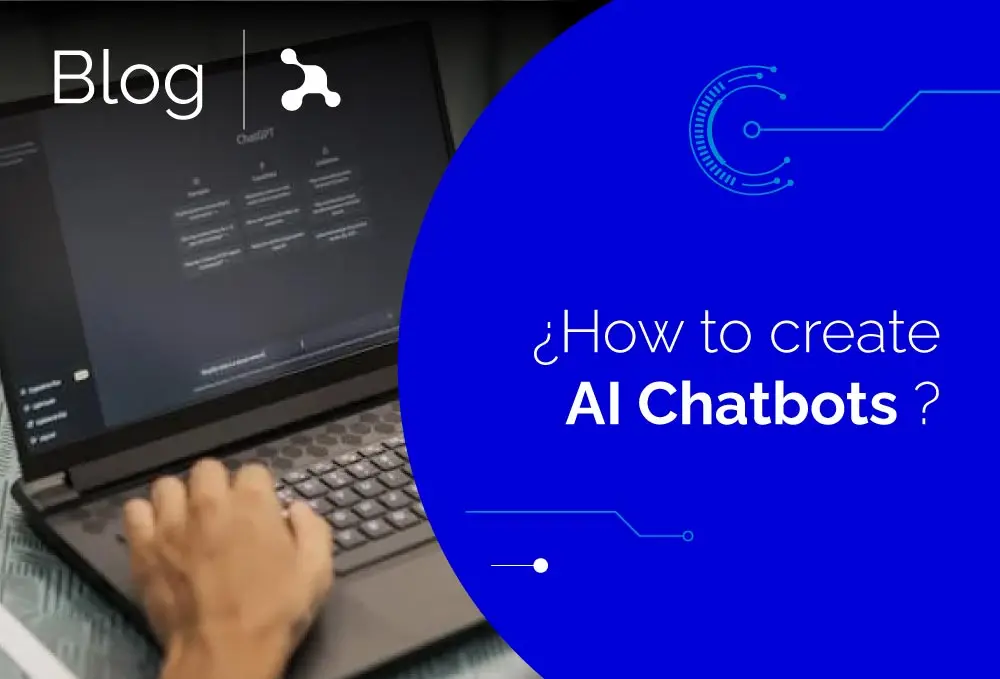Chatbots have become an essential tool for improving customer service, automating tasks, and offering a personalized experience across various platforms.
With advances in artificial intelligence (AI), chatbots can now better understand natural language, learn from interactions, and provide more accurate and human-like responses.
What is a Smart Chatbot?
A smart chatbot is a program that uses artificial intelligence to interact with users via text or voice, simulating human conversation. Unlike basic chatbots, which are limited to following predefined scripts, smart chatbots can understand user intent, learn from previous interactions, and provide more relevant responses.
How are Chatbots Created?
Step 1: Define Objectives and Use Cases
Before choosing tools or starting the build, it’s crucial to clearly define your chatbot’s objectives. Key questions include:
- What specific problems or needs will the chatbot address?
- Who is the target audience?
- What type of interaction will it handle (support, sales, reservations, etc.)?
Defining these aspects will guide the chatbot’s design and development toward effective solutions.
Step 2: Choosing Language Models and Technologies
To create a smart chatbot, you need to select the right language models and technologies that allow the bot to understand and generate language. Here are some key approaches and technologies:
-Transformer-based Language Models
- GPT (Generative Pre-trained Transformer): Models like GPT-3 and GPT-4 are known for their ability to generate coherent text and understand complex contexts. They use large amounts of data to pre-train and can adapt to various natural language processing (NLP) tasks.
-Intent Classification Models
- BERT (Bidirectional Encoder Representations from Transformers): BERT is effective for understanding the bidirectional context of words in a sentence. It’s useful for classifying intents and extracting entities within a conversation.
-Recurrent Neural Networks (RNN) and LSTM (Long Short-Term Memory)
- LSTM:These networks are suitable for handling data sequences and can remember information throughout the conversation, which is useful for maintaining context in prolonged interactions.
-Generative Response Models
- T5 (Text-to-Text Transfer Transformer): T5 is a versatile model that converts various NLP tasks into text-to-text problems, enabling it to generate personalized and natural responses.
-Natural Language Processing Frameworks
- SpaCy: A Python NLP library that offers tools for text analysis, intent classification, and entity extraction.
- NLTK (Natural Language Toolkit): A Python library that provides tools for working with human language, useful for tokenization and text analysis.
Step 3: Conversation and Flow Design
Conversation design is one of the most important aspects of a chatbot. This is where you define how the bot will interact with users, the paths it will take depending on responses, and how it will handle exceptions or errors.
- Conversation Map: Create a visual diagram showing the different paths a conversation can take, considering various intents and possible responses.
- Error Handling: Define how the chatbot will respond when it doesn’t understand a request or when the user deviates from the expected flow.
- Context and Memory: Advanced chatbots can remember details from previous interactions to offer a more personalized experience.
Step 4: AI Model Training
For a chatbot to be truly intelligent, it needs to be trained with real data. This is where natural language processing (NLP) and machine learning (ML) capabilities come into play. Key steps include.
- Intent Labeling: Classify the different intents users may have (asking for prices, making a reservation, requesting support, etc.).
- Entities and Parameters: Define and train the chatbot to identify specific entities (such as dates, locations, or products) within a conversation.
- Iterative Training:As the chatbot interacts with more users, it gathers data and adjusts its model to improve the accuracy, relevance, and personalization of its responses.
Step 5: Integration and Deployment
Once the chatbot is trained and tested, it’s time to integrate it into the chosen platform (website, mobile app, social media, etc.). Ensure that the chatbot integrates seamlessly into the user experience and provides clear value from the first interaction.
- Testing and Optimization: Run tests with real users to identify areas for improvement. Monitor performance and adjust interactions as needed.
- Continuous Updating: AI requires regular maintenance. As more data is gathered, update the model to maintain accuracy and relevance.
Step 6: Measuring Results
The success of a smart chatbot is measured by its ability to meet the defined objectives. Key metrics include:
- First Contact Resolution Rate: What percentage of inquiries are resolved without the need for human intervention?
- User Satisfaction: Measured through surveys or ratings within the conversation flow.
- Return on Investment (ROI): Evaluate whether the chatbot has generated tangible benefits, such as cost reduction or increased conversions.
Creating a smart chatbot is a process that combines advanced technology with a deep understanding of user needs and problems. From selecting language models to conversation design and model training, every step is crucial to ensuring that the chatbot delivers a smooth and effective experience. As artificial intelligence continues to evolve, chatbots are becoming an indispensable part of any company’s digital strategy. With the right tools and methodologies, you can implement a chatbot that not only solves problems but also significantly enhances the customer experience.




